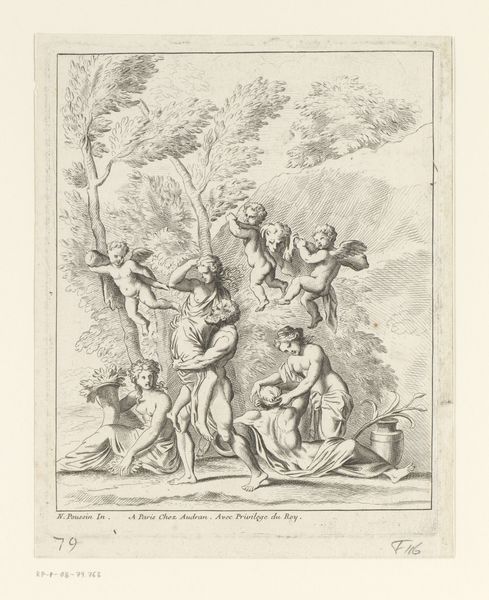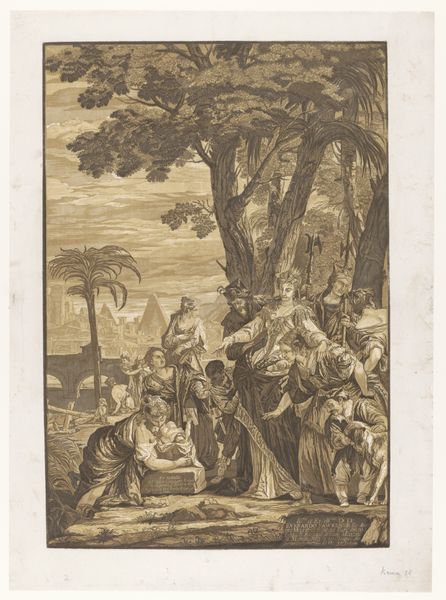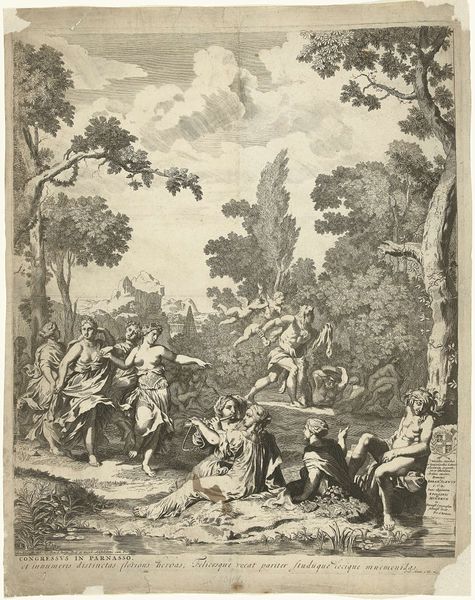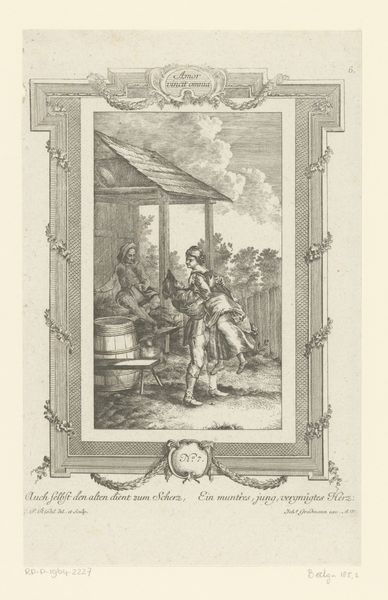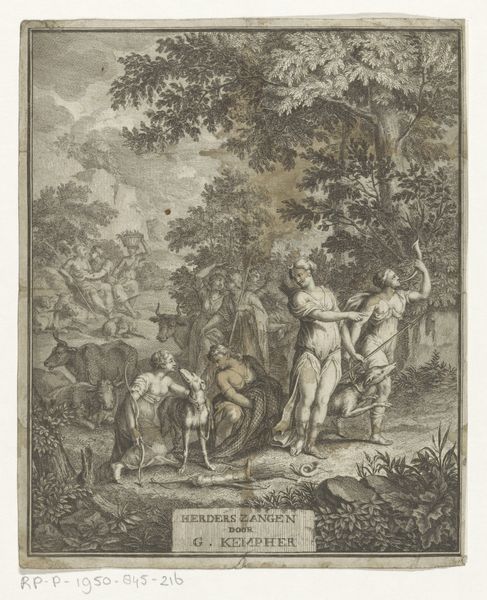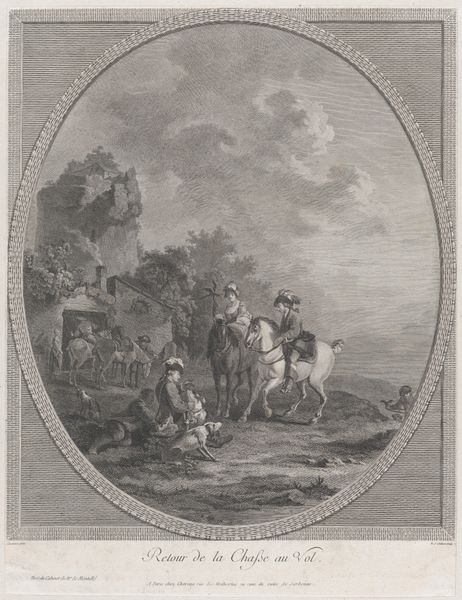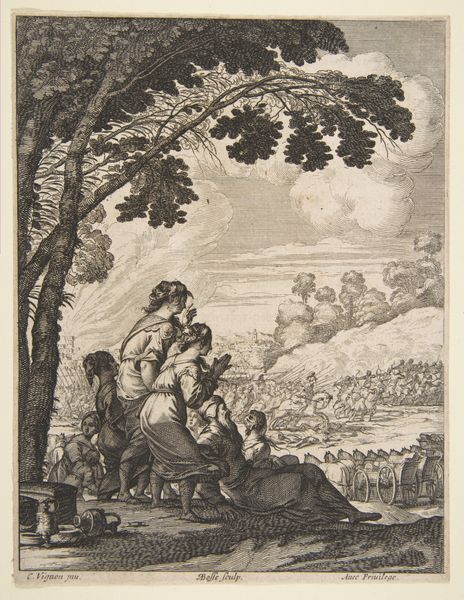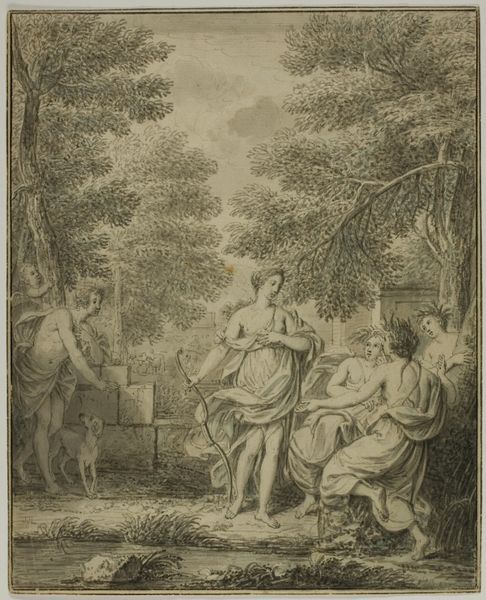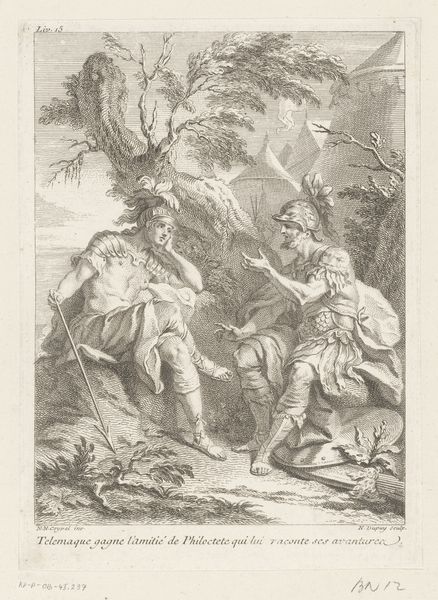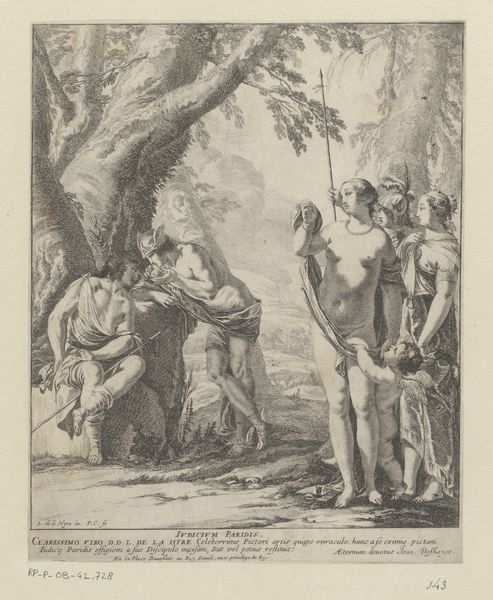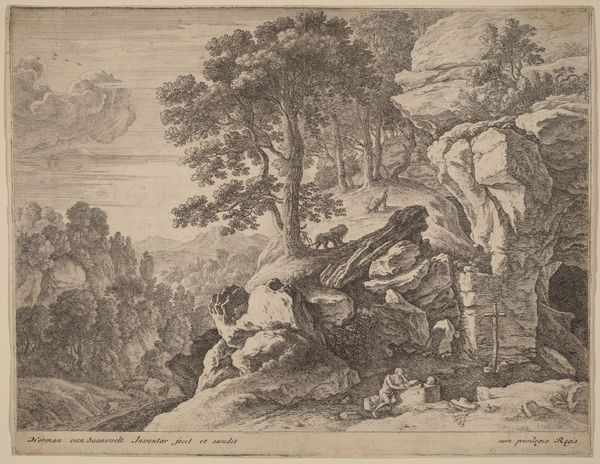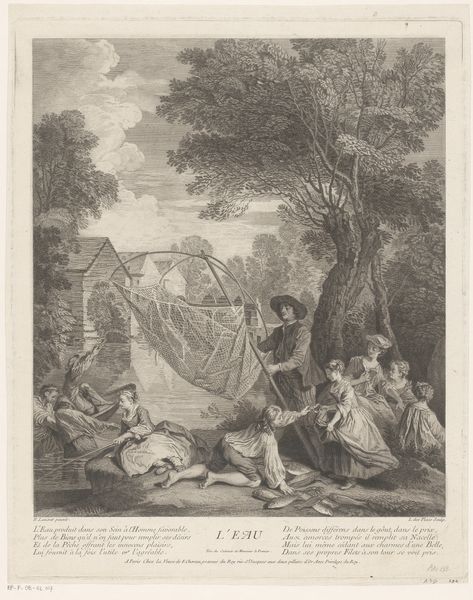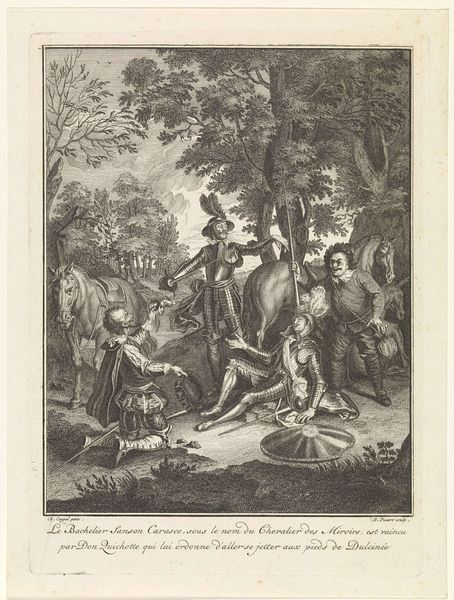
Greift er ihm ans Kinn mit wildem Hassen _ Und reißt vom Bart heraus, was er kann fassen (Rodomont und der Mönch) c. 1773
0:00
0:00
drawing, ink, indian-ink
#
drawing
#
narrative-art
#
ink
#
classicism
#
indian-ink
#
history-painting
Copyright: Public Domain
Curator: This dramatic scene is "Greift er ihm ans Kinn mit wildem Hassen _ Und reisst vom Bart heraus, was er kann fassen (Rodomont und der Mönch)", or “Rodomont and the Monk” by Jean-Baptiste Greuze, created around 1773. It's an Indian ink drawing, currently housed here at the Städel Museum. Editor: Immediately, it hits me as pure theater! The intense expressions, the dynamic poses – almost like a stage play frozen in time. The greyscale also amps up the drama. What do you make of the composition? Curator: The composition is striking, indeed. It perfectly captures a moment of high conflict, a dramatic tension you find across Greuze's narrative drawings, which is often inspired by literary sources. This is from the epic poem "Orlando Furioso," the confrontation of the warrior Rodomont with a humble monk. Look at how the light focuses on the struggling figures, staged almost on a pedestal to highlight their roles in a conflict of worldly and religious powers. Editor: A struggle of powers. That’s a good way of putting it. It seems to me, with all that wildness – Rodomont’s about to tear that poor monk's beard off! -- that Greuze's doing more than just illustrating a story; he’s diving into primal feelings about violence, religion... all wrapped up in some social commentary of the time, I suspect. Curator: Spot on. Greuze often explored moral and social themes in his work, influenced by the Enlightenment. The setting—a stark landscape—underscores the psychological drama. Greuze masterfully captures texture through these dynamic ink strokes; Rodomont's armor shines fiercely compared to the monk's soft garments, reflecting worldly and spiritual contrast in form. Editor: There is almost a caricature element to the work; that over the top drama is funny, right? It kind of softens what might otherwise be unbearable. And speaking of tones: The balance in the piece… from inky shadows to near-white highlights – creates so much depth. You can almost feel the wind and the monk's fear. Curator: The artistry and technical skill is evident in the handling of the ink. Greuze had such control in suggesting form, from folds in fabric to the reflections on armour, its quite spectacular. A great testament to the power of monochromatic art. Editor: Agreed. Looking closely has only deepened the magic of it for me. I was caught by surprise initially, but now, reflecting on the layers it really grows on me. Curator: Exactly. "Rodomont and the Monk" may at first seem like a straightforward historical scene, but it unfolds into an investigation into morality, power, and our most fundamental instincts.
Comments
No comments
Be the first to comment and join the conversation on the ultimate creative platform.
